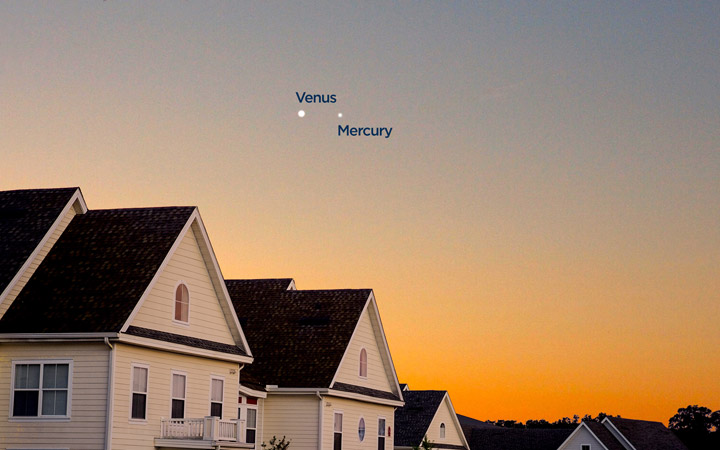TORONTO – Have you noticed two bright objects in the western sky just after sunset? Don’t worry: they aren’t UFOs — they’re planets.

The particularly bright one is Venus, sitting more than 235 million kilometres from Earth. The smaller one to the right is Mercury, which right now sits more than 150 million kilometres from Earth. (Mercury is currently closer to Earth than Venus because of their position as they orbit the sun.)
READ MORE: 7 astronomical events you don’t want to miss in 2015
The pair actually were closest on Jan. 10 and are slowly moving apart as Mercury moves in retrograde (that means that it appears to be moving in the opposite direction than it was moving; it’s not actually doing that, it’s just due to the motion of Earth). But they’re a stunning pair in the sky at dusk (and they’re only visible for about an hour and a half after the sun sets).
What makes Venus so bright is its high albedo, or reflectivity. Venus, only slightly smaller than Earth, is often cited as a planet with a “runaway greenhouse effect.” The result of too much carbon dioxide and nitrogen, as well as clouds of sulfuric acid, is that solar radiation is reflected back out into space.
Mercury — the first planet out from the sun — can be a bit elusive to those trying to catch a glimpse of the small, rocky world. That’s because not only does it have a low albedo, but due to its close proximity to our nearest star, it’s often lost in the glare of the sun.
If you’re clouded out, don’t worry: there are still a few days left to observe the pair. And, if you miss this one, at the end of February, you can catch another planetary pairing as Mars and Venus are set to put on a pretty nice show of their own.


Comments